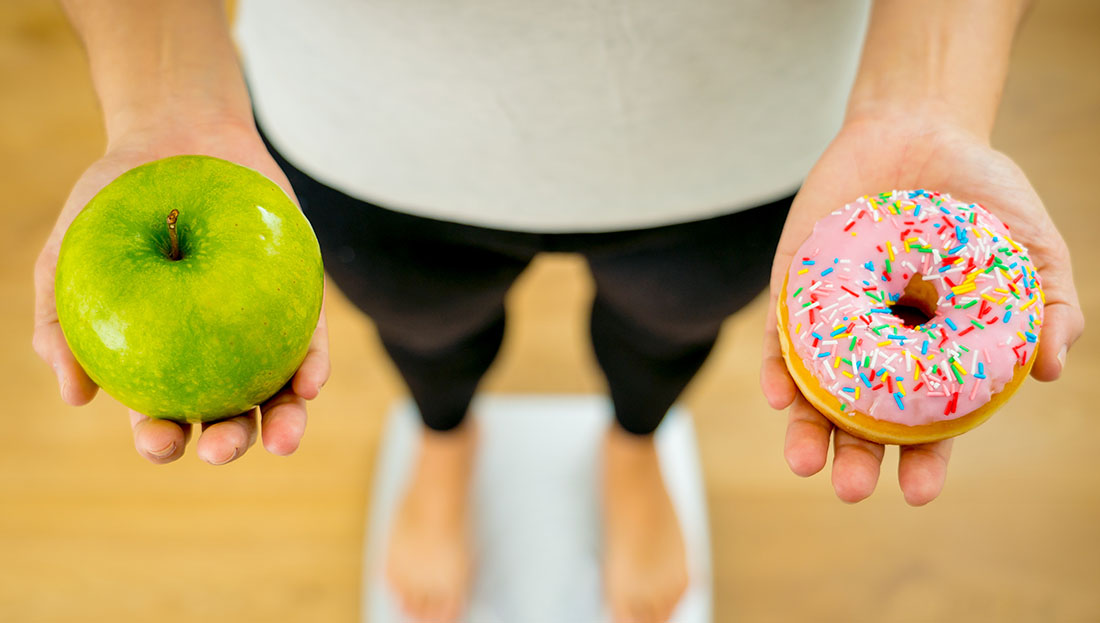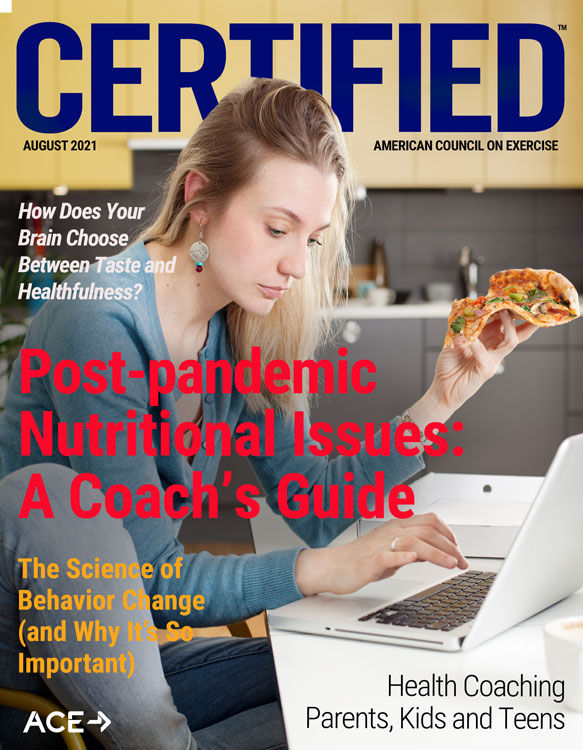
How Does Your Brain Choose Between Taste and Healthfulness?

You dash into a convenience store for a quick snack, spot an apple and reach for a candy bar instead. Poor self-control may not be the only factor behind your choice, new research suggests.
That’s because our brains process taste information first, before factoring in health information.
“We spend billions of dollars every year on diet products, yet most people fail when they attempt to diet,” says study co-author Scott Huettel, a professor of psychology and neuroscience at Duke University, where the study was conducted. “Taste seems to have an advantage that sets us up for failure.” Huettel explains that, for many individuals, “health information enters the decision process too late (relative to taste information) to drive choices toward the healthier option.” In other words, if you haven’t decided ahead of time that you will make a healthy choice, your brain is going to urge you to choose the tastier (which is often the less-healthy) option instead.
The new study, which was published in Nature Human Behaviour, describes the advantage taste has over healthfulness in the decision-making process.
Decision-making Tips
Offer these tips to your clients to help them overcome their brain’s natural tendency to prioritize taste over healthfulness:
- When faced with a range of choices, try to slow down the decision-making process to allow more time for the health-related evidence to catch up to the evidence for the immediate satisfaction of eating something that tastes good.
- Begin to place more value on the delayed benefit of eating healthfully and shift the focus away from the immediate gratification of the taste of the less-healthy option.
- Take a moment to consider the evidence for the healthy choice. A good place to start is to think about how you feel after eating healthy foods compared to unhealthy foods.
- Give yourself a decision-making “time-out.” Often, we need a moment to consider decisions. The bigger the decision we need to make, the more time we may spend thinking about the options. While we can’t take hours or days to make decisions about what to order at a diner or while in line at a fast-food restaurant, we can start thinking about the value of making healthy decisions before we reach that point.
- Focusing on the importance of eating healthy and reminding yourself of this often primes the decision-making process in favor of the healthy choice and decreases the weight, or value, of the evidence for taste.
- Finally, can you make healthy foods taste better? If the difference between the healthy choice and the unhealthy choice is not extreme, the evidence for making the healthy choice may begin to outweigh the evidence for taste more quickly.
“We’ve always assumed people make unhealthy choices because that’s their preference or because they aren’t good at self-control,” explains study co-author Nicolette Sullivan, previously a postdoctoral associate at Duke and now an assistant professor of marketing at the London School of Economics and Political Science. “It turns out it’s not just a matter of self-control. Health is slower for your brain to estimate—it takes longer for you to include that information into the process of choosing between options.”
For the study, Sullivan and Huettel recruited 79 young adults with a median age of about 24 years. Study participants were asked to fast for four hours before the experiment to ensure they arrived hungry. Participants were asked to rate snack foods on their tastiness, healthfulness and desirability. They were then presented with pairs of foods and asked to choose between them, and the researchers timed their choices.
At the end of the experiment, participants were offered one of the foods they had chosen. Study participants registered taste information early in their decision-making process, taking about 400 milliseconds on average to incorporate taste information. Participants took twice as long to incorporate information about a snack’s healthfulness into their decisions.
That may not sound like much time. In many cases though, it’s enough to alter the choice we make.
“Not every decision is made quickly—house purchases, going to college—people take time to make those choices,” Huettel says. “But many decisions we make in the world are fast—people reach for something in the grocery store or click on something online.”
The authors say their findings could apply to other choices, not just food. For instance, some financial decisions, such as saving and spending choices, may also be affected by how, when and how quickly the brain processes different types of information.
Meanwhile, all is not lost in the war against junk food cravings. Half of study participants received a blurb before the experiment, stressing the importance of eating healthy. Those participants were less likely to choose an unhealthy snack.
What the Research Means to Health and Exercise Professionals
Making choices, even between something as relatively simple as which food to eat, involves compiling and integrating evidence for and against each option over time, explains Chris Gagliardi, ACE Scientific Education Content Manager and ACE Certified Health Coach. We make decisions once the strength of the evidence reaches the threshold needed for choosing one option over the other.
“As this research demonstrates, when it comes to making healthy food choices, the evidence for taste sometimes outweighs the evidence we have for how healthy a food might be, which may lead our clients to make unhealthy decisions,” says Gagliardi. For this reason, it’s important to help clients understand that making good choices isn’t simply about having enough willpower or self-control.
“There may be ways to set up environments so people have an easier time making healthy choices,” Huettel says. “You want to make it easy for people to think about the healthfulness of foods, which would help nudge people toward better decisions.”
The key, says Gagliardi, is to begin the decision-making process early, focus on the value and future benefits of eating healthy, and to slow down the decision-making process whenever possible. To illustrate how this might work, he describes a scenario that most of us can relate to: eating out while on the road. “If I know I am taking a long drive tomorrow and will be eating fast food, I can start by thinking about making healthy choices even while on the road. The night before I can research the fast-food place I will be stopping at and start weighing the evidence for health and for taste. Once in line at the drive-thru, I will have already narrowed down my decision to a tasty unhealthy food and a healthier option. I have primed my decision-making process by beginning to weigh the evidence ahead of time and I have decided to sit, think and breathe for a few moments before placing my order. Taking these steps can help to prime your thinking toward the delayed future benefits of healthy eating and shift the weight from taste to health and allow the lagging health evidence to catch up with the faster processing of the evidence for taste.”
Gagliardi’s approach is validated by another finding of the study, which showed that slowing down the decision-making process led to better choices: When study participants took longer to consider their options, they tended to pick healthier ones.

 by
by 

